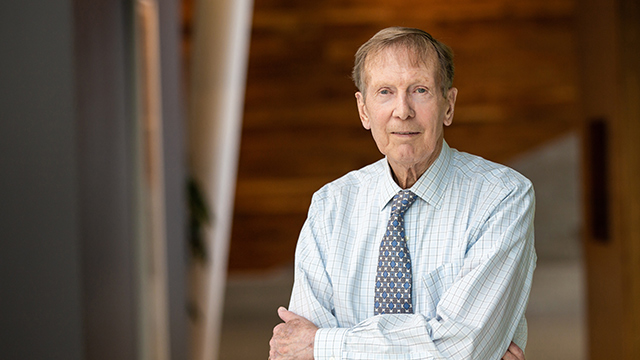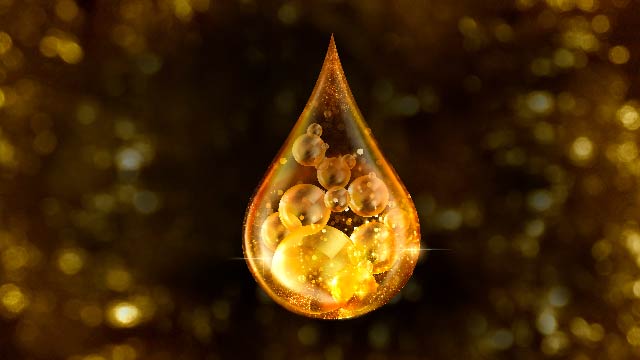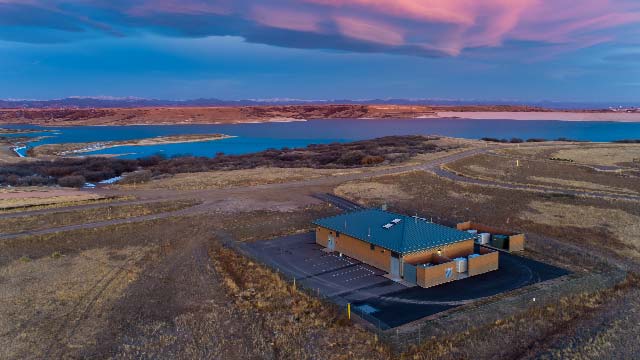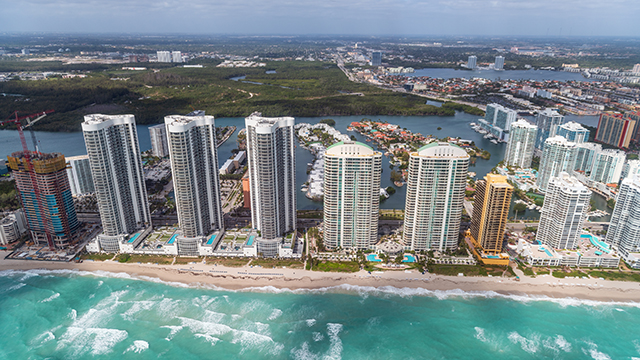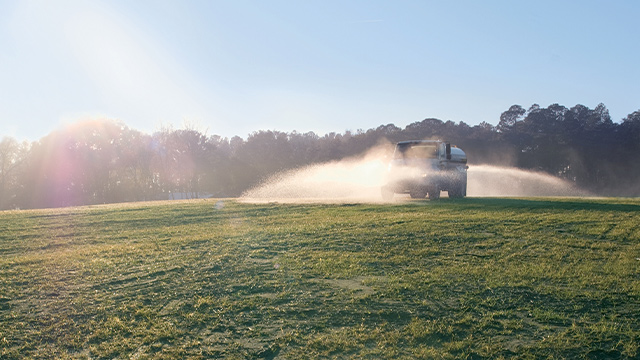Back in the early 1970s, the city of Johannesburg, South Africa, found itself in a tough spot regarding its water supply. Reservoirs that received treated used water effluent and served as the water supply for the city and others down stream had turned green, due to excess algae growth.
“The used water was well-treated and also went through wetlands, but the nitrogen and phosphorous were not removed,” explained Dr. James L. Barnard, B&V Water Global Practice Leader and Senior Process Specialist. “With the reservoirs being the water supply for millions of people, it was a great concern.”
The city was determined to do something different about the slime buildup, Barnard recalled, and Barnard had a revolutionary solution in mind. Fortunately, he had contacts – former instructors – in positions within the city that would listen to him.
Before returning to his native South Africa, Barnard had done post-graduate work at the University of Texas and Vanderbilt University in the United States. It was there that he became aware of some preliminary studies being conducted in nitrogen and phosphorous removal separately.
In his research, Barnard discovered a way to remove nitrogen during water treatment using naturally occurring microorganisms. This discovery did not involve the use of chemicals, which was the standard practice of the day. Barnard’s method thus saved substantial costs and did not cause excessive sludge after treatment.
Another Discovery in the Wings
Barnard explained his methods to Pieter Meiring, who was tasked with designing used water treatment plants. Meiring, who would become one of Barnard’s mentors and future business partner, contacted the engineers in Johannesburg.
“The city had very knowledgeable people working for it,” Barnard said. “I talked to Meiring and his colleagues about what I had done in the lab, and the city said, ‘That’s what were going to do.’ What I said just made sense to them.”
While the BNR plant was under construction, Barnard discovered at a pilot plant how he could produce simultaneous biological nitrogen and phosphorous removal in the same system. This was the breakthrough he was seeking.
Meiring and Barnard told the city that they could not guarantee that Barnard’s new discovery would work. “But we think if you build an anaerobic zone (an area where water would be treated without oxygen or nitrates present) upfront of the existing tanks, we may realize phosphorous removal,” Barnard said.
The city experimented with the idea at another one of its plants. The tests satisfied the city that the phosphorous removal could work, so they issued Meiring and Barnard a change order to add anaerobic zones to the plant.
“They built a huge plant on the basis of my little lab unit,” Barnard recalls with his typical understatement.
The plants BNR worked well. A new technology for water treatment had been successfully created.
“Nothing happens in a vacuum,” he added. “There was a lot of work going on everywhere. I took that work and channeled it into something rather than starting from scratch. You see little pieces of evidence here, there and everywhere, and you put the whole lot together.”
Dealing with Skeptics
Change can be difficult for some people and entities to accept. Barnard found that out when he started to bring BNR into the marketplace.
He has been called a “snake oil salesman” more than once. Some university professors claimed BNR was not possible and fought Barnard for years, especially regarding its ability to remove phosphorous. At a visit with a potential client, the utility asked where BNR had first been implemented. When Barnard replied, “South Africa,” his host replied, “Africa? Ha!” and walked out of the room, not to return.
Barnard persevered despite the naysayers.
“I ignored them,” he said. “I didn’t try to argue with them. I think the minute you argue with people like that, you may lead them to think they have a point.”
A Proponent of New Research
Barnard has not stood pat with BNR. New concepts of nutrient removal and water reuse have been developed in the intervening 40 years. Rather than simply defend BNR, Barnard has been one of the vocal proponents of these new concepts.
“It would be stupid to be otherwise,” Barnard said. “I’ve seen the merits, and that’s why I support that line of thinking.”
He is speaking of a concept called “struvite precipitation,” which one of his nominators for the Lee Kuan Yew Prize noted is “compatible with BNR as biological phosphorous removal concentrates phosphorous in a form that can be recovered. Urine separation could reduce influent nitrogen and phosphorous by 60 to 70 percent, making it easier to reach low effluent nutrient concentrations.”
Barnard is undeterred about the importance of removing and recovering phosphorous from used water. While he has built a career of removing phosphorous from water, he is now very concerned about the limited mineral phosphorous deposits in the world, and the need to recover phosphorous for recycling.
With struvite precipitation, phosphorous is not only removed from water, but it is also turned into pure crystals that then can be used to fertilize crops, thus returning the element back to the soil. This is a process he is advocating.
“The world is running out of phosphorous – there is only so much of it,” Barnard said. “By growing and exporting crops, we have broken the phosphorous cycle. We have to import phosphorous from somewhere else to replace what is removed in production. The biological removal of phosphorous makes the recovery of it possible.”
Open-Door Mentoring
Just as Meiring and the late Professor W. Wesley Eckenfelder mentored Barnard, so, too does Barnard mentor young engineers. He speaks often about BNR in courses and EPA seminars. He also maintains an open-door policy at his Black & Veatch office.
He is often asked, “How does BNR work?” and he simply answers, “We just take nature and put it in a box with ideal conditions. Its all natural. When you see slime on a rock, that’s nature growing the bacteria to clean the water. All we do is take that slime, put it in a tank and let it do its job under ideal conditions. The whole idea, as my professor used to say, is that we need to keep those bugs happy.”
The other thing he likes to tell young engineers is that the word engineer comes from the French word “ingenieur,” which is someone who is ingenious.
“I tell young engineers, ‘Remember, you are ingenieurs.’ It is important to remember that, because that is what the profession is all about – being ingenious and finding solutions!”

Prestigious Lee Kuan Yew Water Prize for 2011 Goes to Dr. James Barnard
Dr. James L. Barnard is the winner of the prestigious Lee Kuan Yew Water Prize for 2011, presented during the Singapore International Water Week. Barnard is known globally as the Father of BNR (biological nutrient removal), a non-chemical means of water treatment in which nitrogen and/or phosphorous are removed from used water.
Barnard developed BNR more than 40 years ago, and it is now used worldwide in thousands of wastewater treatment systems in many varied climates. This story touches on his initial successes with BNR, how he dealt with skepticism about it and how he encourages engineers throughout the industry to pursue new discoveries.
